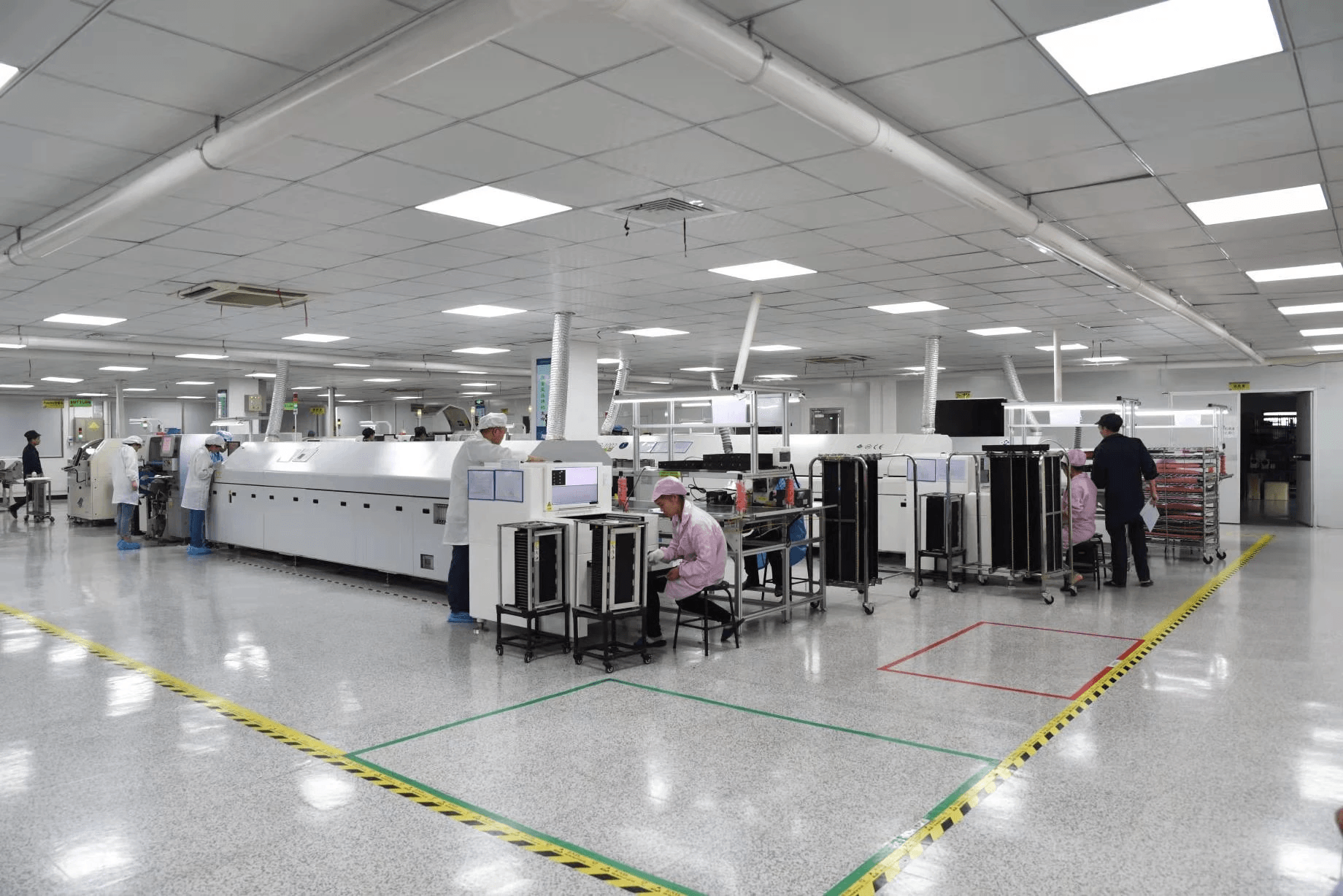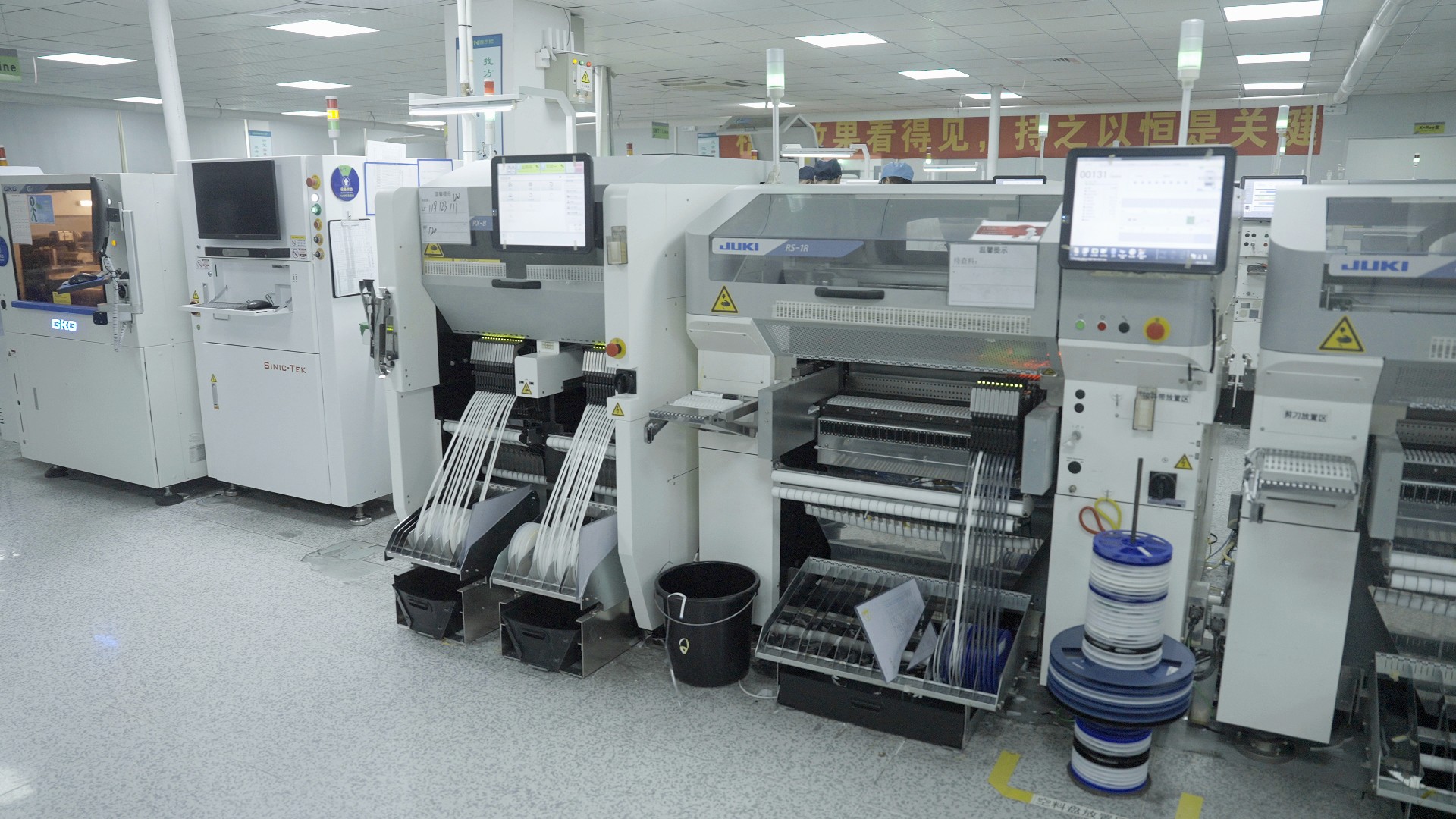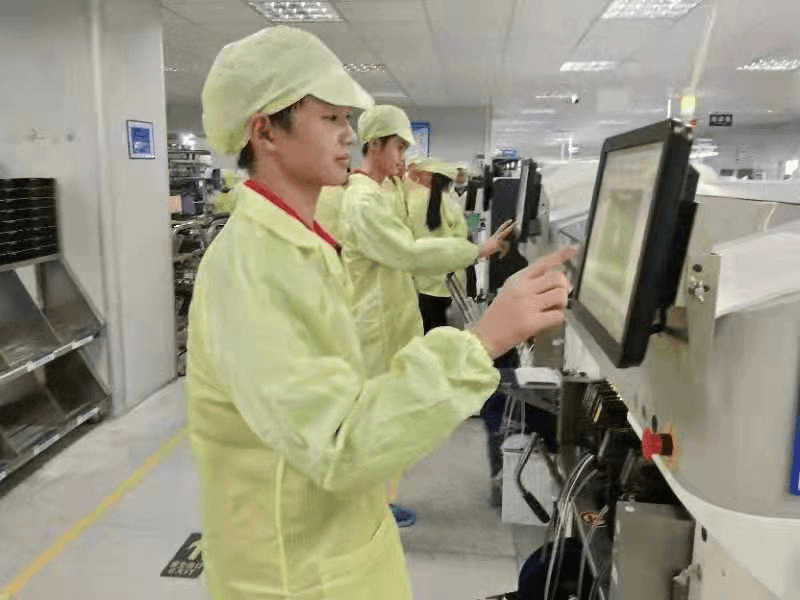Introduction

In the fast-paced world of electronics, understanding the importance of PCB assembly machines is crucial for any manufacturer aiming to stay competitive. These machines are not just tools; they are the backbone of efficient production lines, transforming intricate designs into functional products. Without a reliable PCB assembly machine, even the most innovative circuit designs can fall flat, making it essential to choose wisely.
Understanding the Importance of PCB Assembly Machines
PCB assembly machines play a pivotal role in electronics manufacturing by automating and streamlining the process of assembling printed circuit boards (PCBs). What does PCB assembly do? It involves placing electronic components onto PCBs and soldering them to create fully functional circuits. The efficiency and precision offered by modern PCB assembly machines significantly reduce production time while enhancing product quality, which is why manufacturers must consider their options carefully.
Key Features to Look For
When selecting a PCB assembly machine, certain key features should be at the forefront of your decision-making process. Look for machines that offer flexibility in handling various types of PCB assembly machine parts, ensuring compatibility with your existing equipment and processes. Additionally, consider features such as speed, accuracy, and ease of use—after all, what machine is used to make a PCB should not only meet technical specifications but also fit seamlessly into your workflow.
The Role of Technology in PCB Assembly
Technology plays an indispensable role in modern PCB assembly processes by enhancing automation and improving overall efficiency. With advancements like Industry 4.0 integration and smart manufacturing solutions, manufacturers can now leverage data analytics for better decision-making regarding their PCB manufacturing equipment list. Understanding what is the difference between PCB and PCB assembly helps clarify how technology optimizes each step in creating reliable electronic devices while paving the way for future innovations.
Types of PCB Assembly Machines

Overview of SMT Machines
Surface Mount Technology (SMT) machines are at the forefront of modern PCB assembly. These machines excel at placing tiny components directly onto the surface of a printed circuit board, making them essential for high-density assemblies found in today’s electronics. With their ability to handle small-sized components efficiently, SMT machines have become a staple in the PCB manufacturing equipment list for those aiming for precision and speed.
SMT machines typically consist of several key parts including pick-and-place heads, solder paste printers, and reflow ovens. The integration of advanced technology allows these pcb assembly machine parts to work seamlessly together, ensuring that each component is placed accurately and soldered effectively. For manufacturers looking to optimize their production lines, investing in a reliable SMT machine can significantly boost output quality and efficiency.
Exploring Through-Hole Machines
Through-hole technology has been around longer than SMT but remains relevant for specific applications where durability is paramount. Through-hole machines insert components into pre-drilled holes on the PCB before soldering them from the opposite side—making them ideal for larger components or those requiring strong mechanical connections.
One notable advantage is that through-hole assembly provides greater stability under physical stress compared to surface mount techniques. This makes it a preferred choice in industries such as aerospace or automotive where reliability is critical. Moreover, many pcb assembly machine manufacturers offer specialized through-hole equipment designed to cater specifically to these demanding requirements.
Advantages of Hybrid Machines
Hybrid PCB assembly machines combine both SMT and through-hole technologies into one versatile platform—offering manufacturers flexibility like never before. These machines can adapt quickly between different types of assemblies without requiring extensive downtime or reconfiguration; this adaptability makes them ideal for businesses with varied production needs or those transitioning between low-volume prototypes and high-volume runs.
The benefits don’t stop there; hybrid systems often come equipped with advanced automation features that enhance productivity while minimizing labor costs associated with manual handling processes. Additionally, these systems can accommodate diverse pcb assembly machine parts which means they can be customized according to specific project requirements without compromising on quality or speed. Ultimately, hybrid machines represent a smart investment in future-proofing your production capabilities while keeping pace with evolving market demands.
Evaluating Production Volume Needs

Low-Volume vs. High-Volume Production
Low-volume production typically caters to niche markets or specialized projects, where a small number of PCBs are required. In this scenario, a more flexible PCB assembly machine may be ideal, allowing for quick adjustments and rapid prototyping without the need for extensive setup time. On the other hand, high-volume production demands efficiency and speed; hence investing in advanced PCB manufacturing equipment is essential to meet tight deadlines and maintain quality across larger batches.
The primary difference between these two approaches lies in their respective machinery requirements: low-volume setups often utilize versatile machines with interchangeable parts, while high-volume operations benefit from dedicated lines designed for maximum throughput. Understanding what does PCB assembly do in each context will guide you toward selecting the right equipment tailored to your specific needs—whether you're producing a handful of custom boards or thousands of identical units.
Cost Implications of Different Volumes
The cost implications between low-volume and high-volume production can be starkly different when considering initial investments in a PCB assembly machine and ongoing operational expenses. Low-volume setups might seem cheaper at first glance due to lower upfront costs; however, they can incur higher per-unit costs because of less efficient processes and longer lead times for components. Conversely, while high-volume systems may require significant capital investment initially, they often result in lower per-unit costs over time due to streamlined operations.
Moreover, when evaluating your budget against a PCB manufacturing equipment list tailored for either volume type, consider factors such as labor costs and material wastage rates that can further skew total expenses. Selecting the right machine based on these financial considerations will help ensure that you maximize profitability while meeting market demand efficiently.
Scalability Considerations
Scalability is another critical factor when evaluating your production volume needs; it’s essential to choose a PCB assembly machine that can adapt as your business grows or shifts focus over time. If you anticipate an increase in demand or diversification into new product lines, investing in modular machines with interchangeable pcb assembly machine parts could provide flexibility without necessitating complete system overhauls later on.
For companies focused on long-term growth strategies, understanding how easily their chosen equipment can scale up or down is vital—especially if they plan on transitioning from low- to high-volume production down the line. Manufacturers who offer scalable solutions not only position themselves favorably within competitive markets but also ensure their clients remain agile amidst changing technological landscapes.
Technology and Automation Trends

In the fast-evolving landscape of electronics manufacturing, technology and automation are reshaping how we approach PCB assembly. The integration of advanced technologies not only streamlines processes but also enhances precision and efficiency. Understanding these trends is crucial for anyone looking to invest in a PCB assembly machine that meets modern demands.
Industry 4.0 in PCB Assembly
Industry 4.0 is revolutionizing the manufacturing sector, including PCB assembly, by incorporating smart technology and data analytics into production lines. This shift allows for real-time monitoring of PCB assembly machine parts, leading to improved quality control and reduced downtime. As manufacturers embrace this digital transformation, they can optimize their operations through predictive maintenance and enhanced supply chain management.
The concept of Industry 4.0 also emphasizes connectivity between machines, enabling seamless communication across various stages of production. This interconnectedness means that what was once a standalone process can now be part of an integrated system that boosts efficiency and responsiveness to market demands. Ultimately, embracing Industry 4.0 principles will help businesses stay competitive in an ever-changing landscape.
Benefits of Automated Assembly
First and foremost, it significantly increases production speed while maintaining high levels of accuracy—two critical factors for meeting market demands efficiently. Moreover, automated systems reduce the likelihood of human error during the assembly process, ensuring consistent quality across all boards produced.
In addition to speed and accuracy, automated PCB assembly machines can easily adapt to various product lines without extensive reconfiguration or downtime. This flexibility allows manufacturers to respond swiftly to changing customer needs or new technological advancements without compromising productivity levels. Furthermore, investing in automation often leads to lower labor costs over time as fewer workers are needed for repetitive tasks.
Future-Proofing with the Right Technology
Investing in state-of-the-art technology is essential for future-proofing your PCB assembly operations against rapid industry changes and advancements in manufacturing techniques. By selecting a versatile PCB assembly machine capable of accommodating evolving technologies—such as AI-driven analytics or advanced robotics—you position your business for sustained growth even as market dynamics shift dramatically.
Moreover, understanding the difference between PCB and PCB assembly can guide you toward making informed decisions about which machines best suit your needs today while preparing you for tomorrow's challenges in electronics manufacturing. It's crucial not only to consider current requirements but also potential future expansions or shifts in production volume when evaluating suppliers like Bensun Technology.
Finally, staying updated on emerging trends will help ensure your investment remains relevant amidst ongoing technological advancements within the industry landscape—keeping you ahead of competitors who may lag behind due to outdated equipment or practices.
Budgeting for Your PCB Assembly Machine

Budgeting for a PCB assembly machine involves more than just the initial purchase price; it requires a comprehensive understanding of various costs involved in the long run. From estimating initial investment costs to considering ongoing maintenance and operational expenses, every aspect plays a crucial role in ensuring the sustainability of your PCB manufacturing process. Furthermore, exploring financing options can help businesses manage cash flow while investing in essential PCB manufacturing equipment.
Estimating Initial Investment Costs
When contemplating the purchase of a PCB assembly machine, understanding the initial investment costs is paramount. These costs can vary significantly based on machine type, brand, and features; for instance, advanced models with automated capabilities may come at a premium compared to basic machines. Additionally, it's essential to factor in the cost of necessary PCB assembly machine parts that might not be included in the base price, such as feeders and nozzles.
Investing in high-quality equipment from reputable PCB assembly machine manufacturers can minimize future repair and replacement costs. Therefore, conducting thorough research on different models and their specifications can help you make an informed decision that aligns with your production needs.
Maintenance and Operational Expenses
Once you've made your investment in a PCB assembly machine, ongoing maintenance and operational expenses become critical considerations for budgeting purposes. Regular maintenance is essential to keep machines running efficiently; neglecting this aspect could lead to costly downtimes or even complete breakdowns that disrupt production schedules. It's advisable to create a maintenance plan that outlines routine check-ups and potential repairs based on manufacturer recommendations.
Operational expenses also include consumables like solder paste or adhesives used during the assembly process—these can add up over time depending on your production volume needs. Moreover, energy consumption should not be overlooked; efficient machines may cost more upfront but will save you money on utilities over their lifespan. In short, being proactive about both maintenance and operational costs ensures you're prepared for any financial surprises down the road.
Financing Options for Businesses
Navigating financing options is crucial for businesses looking to acquire a new PCB assembly machine without straining their budgets excessively. Various avenues exist—leasing machinery allows companies to use equipment without committing large sums upfront while preserving capital for other operational needs. Alternatively, traditional loans from banks or specialized lenders focused on manufacturing equipment could provide favorable terms if structured correctly.
Another option includes exploring government grants or incentives aimed at promoting technological advancements within industries like electronics manufacturing; these opportunities can significantly reduce initial outlay costs associated with purchasing new machinery. Ultimately, choosing the right financing method depends on your company's financial health and long-term goals concerning growth within the competitive landscape of PCB manufacturing.
Choosing the Right Supplier

Selecting a reliable supplier for your PCB assembly machine is crucial for ensuring high-quality production and long-term success. With numerous PCB assembly machine manufacturers in the market, making an informed choice can significantly impact your operations. A thorough evaluation of potential suppliers will help you identify the best fit for your specific needs.
Evaluating Manufacturers and Services
When it comes to choosing a supplier, consider their experience and reputation in the industry. Look for PCB assembly machine manufacturers that offer comprehensive services, including installation, training, and ongoing support. Additionally, reviewing customer testimonials and case studies can provide insights into how well these manufacturers meet their clients' needs.
It's also essential to assess the range of PCB manufacturing equipment they provide. A well-rounded PCB manufacturing equipment list should include various types of machines suitable for different production scales and technologies. This diversity ensures that you have access to all necessary components, including PCB assembly machine parts that are compatible with your chosen systems.
Why Bensun Technology Stands Out
Bensun Technology has established itself as a leader among PCB assembly machine manufacturers by consistently delivering innovative solutions tailored to customer requirements. Their commitment to quality is evident in their advanced technology and rigorous testing processes, ensuring each machine operates at peak efficiency. Moreover, Bensun's competitive pricing makes them an attractive option for businesses looking to optimize their budget without sacrificing performance.
What truly sets Bensun apart is its focus on customization; they understand that one size does not fit all when it comes to PCB assembly machines. By offering tailored solutions based on specific production needs or unique project requirements, they empower businesses to enhance productivity effectively. This flexibility positions Bensun as a go-to partner for companies navigating the complexities of modern electronics manufacturing.
Importance of After-Sales Support
After-sales support is often overlooked but plays a vital role in maintaining operational efficiency with your PCB assembly machine. A strong after-sales service ensures that any issues are promptly addressed, minimizing downtime and keeping production on track. Suppliers like Bensun Technology prioritize customer support through dedicated service teams ready to assist whenever needed.
Furthermore, ongoing maintenance services offered by suppliers can extend the lifespan of your machinery while optimizing performance over time—something every manufacturer desires! Regular check-ups can prevent minor issues from escalating into costly repairs or replacements down the line. Ultimately, selecting a supplier who emphasizes after-sales support can make all the difference between smooth operations or unexpected disruptions in your manufacturing process.
Conclusion

In the ever-evolving landscape of electronics manufacturing, finding the perfect PCB assembly machine is crucial for optimizing production efficiency and ensuring quality. With a variety of options available, from SMT to hybrid machines, understanding your specific needs and production volume will guide you in selecting the right equipment. Additionally, considering factors like technology trends and supplier reliability will help you make an informed decision that supports your business goals.
Recap: Finding the Perfect Machine
When searching for a PCB assembly machine, it’s essential to evaluate both your current and future production needs. Factors such as the types of PCB assembly machine parts required, automation capabilities, and compatibility with existing PCB manufacturing equipment should be prioritized. By doing so, you can ensure that your investment not only meets immediate requirements but also adapts to future technological advancements.
Key Takeaways for Successful Assembly
Successful PCB assembly hinges on understanding what a PCB assembly machine does and how it fits into your overall manufacturing process. Remember that while a PCB refers to the physical board itself, PCB assembly encompasses all processes involved in attaching components to that board effectively. Moreover, working with reputable PCB assembly machine manufacturers can provide insights into best practices and innovative solutions tailored to your specific needs.
Future Trends to Watch in PCB Assembly
As we look ahead in the world of electronics manufacturing, several trends are poised to shape the future of PCB assembly machines significantly. The integration of Industry 4.0 technologies promises increased automation and smarter production lines that enhance efficiency while reducing errors. Additionally, sustainability practices are becoming more prominent within the industry; expect innovations aimed at minimizing waste during both production and operation phases.
